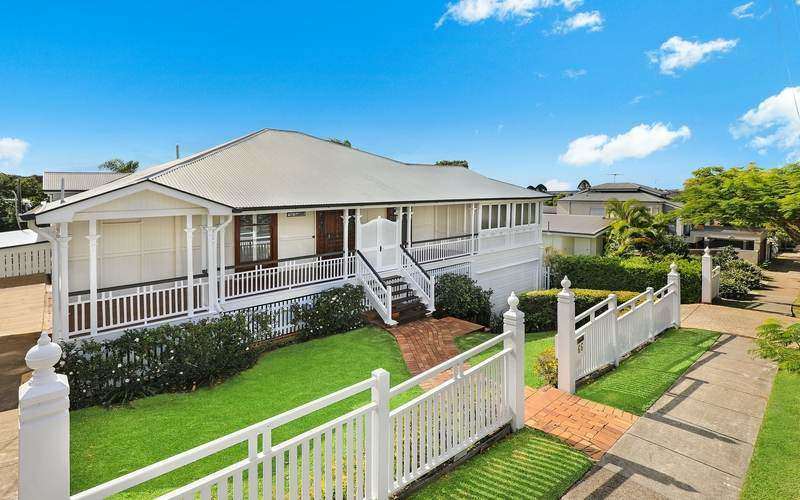EPS director Patrick Bright urged buyers to resist rushing in and skipping a building or pest inspection report.
“I am deeply concerned by the number of properties I’m currently seeing which are being sold without buyers undertaking a building and pest report,” he said.
“It’s often what you can’t see that is the cause of most concern and in my 20-plus years’ experience, renovated properties often have the most expensive hidden problems."
The fresh calls come after a Domain report found home buyers were increasingly ignoring big negatives on the inspection report for fear of missing out on the property.
Buying an investment property or looking to refinance? The table below features home loans with some of the lowest interest rates on the market for investors.
| Lender | Home Loan | Interest Rate | Comparison Rate* | Monthly Repayment | Repayment type | Rate Type | Offset | Redraw | Ongoing Fees | Upfront Fees | Max LVR | Lump Sum Repayment | Extra Repayments | Split Loan Option | Tags | Features | Link | Compare | Promoted Product | Disclosure |
|---|---|---|---|---|---|---|---|---|---|---|---|---|---|---|---|---|---|---|---|---|
5.54% p.a. | 5.58% p.a. | $2,852 | Principal & Interest | Variable | $0 | $530 | 90% |
| Promoted | Disclosure | ||||||||||
5.49% p.a. | 5.40% p.a. | $2,836 | Principal & Interest | Variable | $0 | $0 | 80% |
| Promoted | Disclosure | ||||||||||
5.64% p.a. | 5.89% p.a. | $2,883 | Principal & Interest | Variable | $250 | $250 | 60% |
| Promoted | Disclosure | ||||||||||
5.64% p.a. | 5.89% p.a. | $2,883 | Principal & Interest | Variable | $248 | $350 | 60% |
| Disclosure |
Mr Bright said structural, pest, damp, electrical and plumbing issues with repair bills in excess of $100,000 are not uncommon in properties that when visually inspected looked fine.
“A wise person would not buy a $20,000 used car without a pre-purchase inspection, yet I see people spend a hundred times that amount without one, on a property where there’s a far greater financial downside," he said.
He also found an increase in people staying at home due to COVID-19 has contributed to a surge in renovations.
“When I see renovated properties I am always concerned as to whether the work has been done by a professional or a Bunnings weekend warrior, particularly after the recent lockdowns,” he said.
“Have they tarted up the property and essentially painted over the dodgy bits leaving unsuspecting buyers to eventually pay the price to fix it?"
No deterioration in lending standards, despite increase in risky lending
Prudential regulator data released yesterday showed a notable uptick in lending to borrowers with a deposit as little as 5%.
Loans written for 95% loan-to-value ratio borrowers increased by more than a quarter in 2020 and interest-only loan funding also increased by nearly a third.
However, CoreLogic's head of research Eliza Owen said there had not been any "major deterioration in lending standards".
"[This suggests] there is no need for interventions in the form of tighter credit policies," she said.
"The December 2020 quarter is of particular importance, because it marks a positive turn in Sydney and Melbourne dwelling values coming out of COVID-related restrictions."
Loan-to-income ratios equal to or greater than six-times made up 7% of loans in the December 2020 quarter, which is the highest since records began in March 2019.
Despite this, the risks are still down on what was seen in the mid-2010s, according to Ms Owen.
"Interest only lending was noted as a potential risk to broader financial stability in the years to 2017. At that time, it was becoming more common for borrowers to originate their loans on interest only repayment terms, or refinance and extend their interest only term period," she said.
"This was leading to a delay in the paying down of loan principals, at a time when house prices and household debt were rising."
This data comes when the Government is considering loosening lending standards to place more of the onus of documentation on the borrower, rather than the lender.
Right now, however, Ms Owen said the risk is relatively low.
"The latest data from APRA indicates there is no blow out of risk in mortgage lending, despite the recent surge in property prices across Australia," she said.
"A deterioration in lending standards can be mitigated, as we’ve witnessed before. This could be achieved by tightening serviceability assessment rates, loan sizes relative to incomes or debt (LTI or DTI ratios) or loan sizes relative to home valuations (LVR)."
New Zealand's case study
New Zealand's Reserve Bank, which also acts as prudential regulator, recently put a 'speed gun' on residential lending in an effort to curb rapid house price rises.
From 1 May:
- LVR restrictions for owner-occupiers will remain at a maximum of 20% of new lending at LVRs above 80%.
- LVR restrictions for investors will be further raised to a maximum of 5% of new lending at LVRs above 60%.
This means that most new owner occupiers in New Zealand need a 20% deposit, and most new investors need a 40% deposit.
Photo by Tierra Mallorca on Unsplash

Ready, Set, Buy!
Learn everything you need to know about buying property – from choosing the right property and home loan, to the purchasing process, tips to save money and more!
With bonus Q&A sheet and Crossword!





.jpg)

 Harry O'Sullivan
Harry O'Sullivan
 Bea Garcia
Bea Garcia
 Denise Raward
Denise Raward
 Aaron Bell
Aaron Bell


